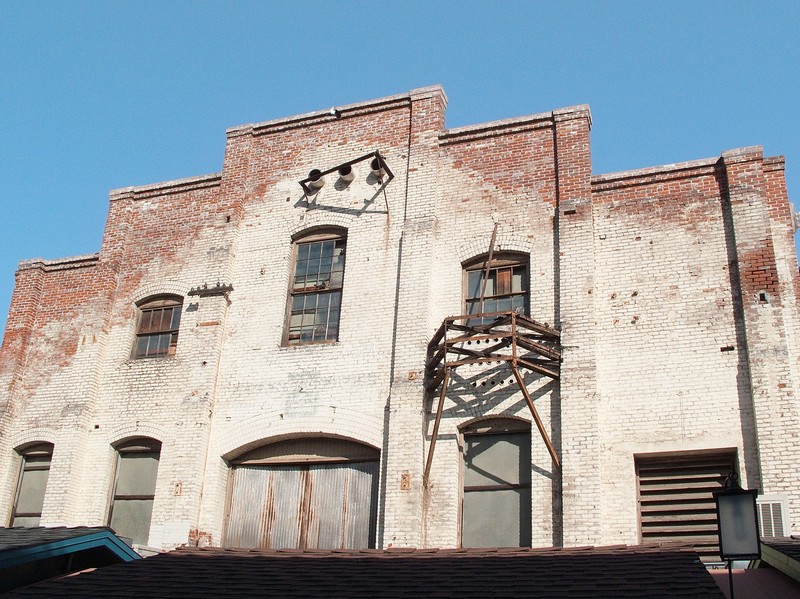Plaza Substation
Introduction
Text-to-speech Audio
Henry E. Huntington owned and operated two massive streetcar lines that spanned the Los Angeles metropolitan area. The Plaza Substation served as the electrical substation for his Los Angles Railway Company line, known locally as the "Yellow Car" streetcar system. Huntington also operated Pacific Electric "Red Car" streetcar line. Indeed, before L.A. gained notoriety for its famous freeway system, its sprawling streetcar network defined its urban area and significantly aided the region's early growth. The massive network required immense power, so Huntington's companies built several power stations, including the Plaza Substation.
Images
Plaza Substation

Backstory and Context
Text-to-speech Audio
Huntington established the Los Angeles Railway Company in 1895 after purchasing the bankrupt Los Angeles Consolidated Railway. Huntington's new company immediately began electrification of the earlier company's cable lines, which begat the expansion and modernization of the entire streetcar system. Three years later, Huntington completely reorganized and enlarged the company to include several other smaller street railway companies. During the first decade of the twentieth century, Huntington was integral in building a first-class transit system in Los Angeles. However, some of the growth occurred at the expense of the company's workforce. Huntington often paid low wages and actively fought union development, routinely joining forces with other business tycoons to fight against strikes and union development. Huntington also hired immigrants and paid them meager wages, notably Mexican workers.
The expansion of Huntington's transit systems, including the Pacific Electric Railway, created the need for increased electrical power sources. Hence, the company built several new substations, including the Plaza Substation. In December of 1903, the Los Angeles Railway Company purchased a parcel of property on Olvera Street just north of the Plaza from Mrs. Luisa Olvera de Forbes. Construction of the Plaza Substation followed sometime between 1903 and 1906. The Plaza Substation served the power production needs of much of the downtown area's streetcars and was the most significant power producer of the Los Angeles Railway Company's substations.
Operations ended at the substation in the years before 1963 when streetcar service ceased in Los Angeles. By the 1970s, a debate ensued over whether to demolish or preserve the building as the Olvera Street area had transformed into a pre-1900 historical district supporting an array of Mexican markets and restaurants. However, because the Plaza Substation stood as one of the last four remaining substations of the original fourteen built by the Los Angeles Railway Company (and the only substation that remained in the central city), the building survived and eventually renovated.
Sources
Friedricks, William B. Henry E. Huntington and the Creation of Southern California. Columbus, Ohio: Ohio State University Press, 1992.
Miller, John E. "Nomination Form: Plaza Substation." National Register of Historic Places. nps.gov. 1978. https://npgallery.nps.gov/GetAsset/9867102d-6c07-48af-b814-b419bea641f1.
"Los Angeles Railway" Southern California Railway Museum. socalrailway.org. Accessed October 23, 2022. https://socalrailway.org/collections/los-angeles-railway/#:~:text=The%20streetcars%20used%20a%20yellow,Los%20Angeles%20more%20than%20tripled.
Powers, Mathew. "Plaza Substation." Clio: Your Guide to History. October 24, 2022. https://www.theclio.com/entry/158203.
Wachs, Martin Wachs. "Autos, Transit, and the Sprawl of Los Angeles: The 1920s." Journal of the American Planning Association 50, no. 3 (1984): 297-310.
By Downtowngal - Own work, CC BY-SA 3.0, https://commons.wikimedia.org/w/index.php?curid=19824070
